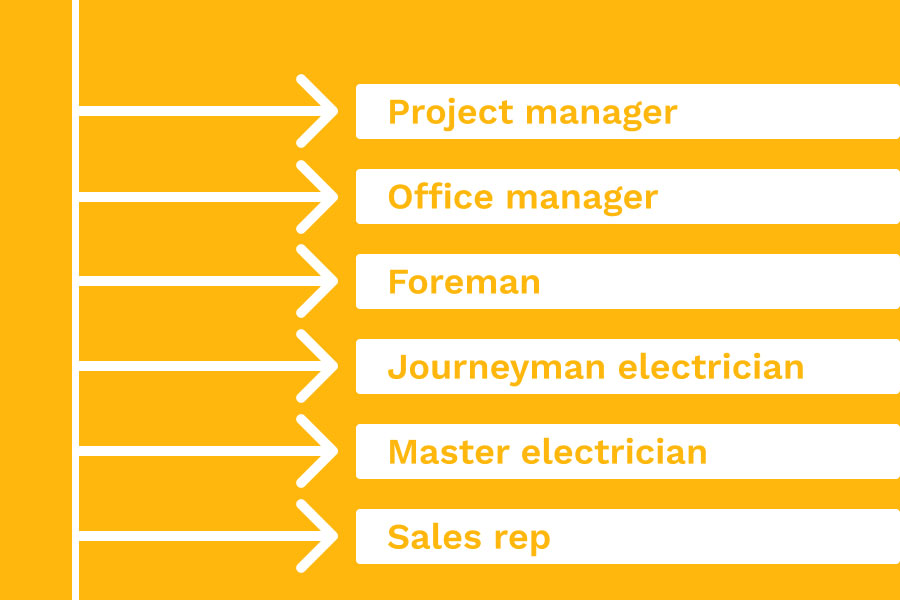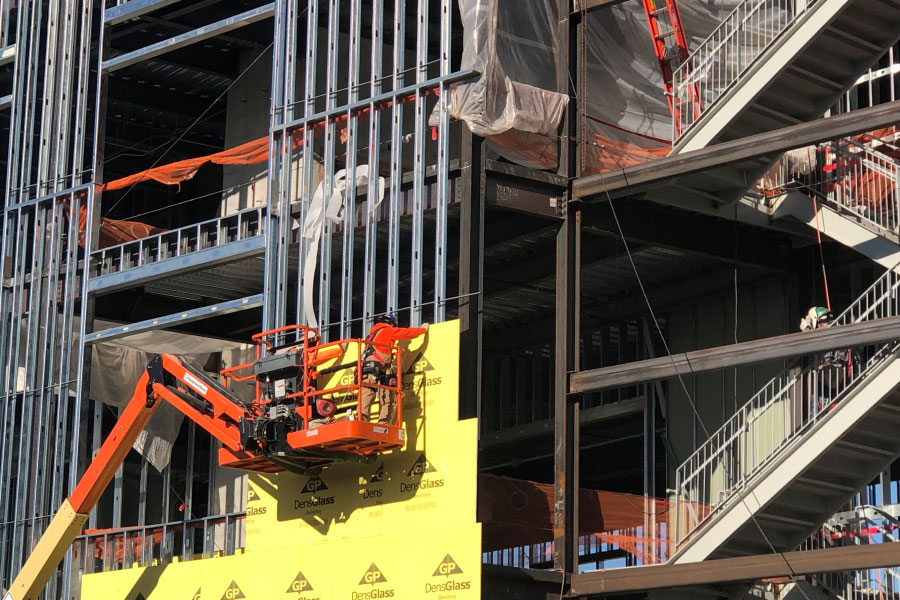It’s no secret that the current labor shortage is top of mind for many in the industry. According to the US Chamber of Commerce, 73% of construction firms report labor shortages as a top concern. In fact, there are roughly 25% more unfilled construction positions than new hires. That gap is unfortunately unlikely to close any time soon. Add in delays and rising material costs and contractors are left wondering what they can do to stay ahead. Waiting for change is not an option.
So what can be done? Change via policy or bureaucracy is unfortunately slow, so the onus is on contractors and the entire skilled trade industry as a whole to handle. Below are a few ways in which you can adapt your business and better plan for the future.
Invest in technology
The trade industry is gradually moving toward a more digital operating standard. 79% of contractors are currently using software to capture and manage data. The reason? Acquiring, retaining, and using data can drastically reduce costs and improve productivity. According to the World Economic Forum, full-scale digitization could lead to $1.2 trillion in savings for construction phases and $500 million in operational costs. These numbers are impossible to ignore.
The construction industry is fast approaching a digital transformation and by virtue there has never been a better time to invest in digital tools and solutions. With the construction labor shortage where it is, owners will need to adapt how they use and schedule their crews in order to stay on schedule and on budget. Investing in digital solutions will help you do this by improving how you job cost, track time, schedule, and manage projects. Software does this by capturing the insights and information needed to better allocate your crews and materials.
Outside of job productivity, adopting technology will show people that you are forward thinking. Having digital solutions in place will show prospective employees and current employees that you are modernized and preparing for the future; and can be used as a selling point for attracting skilled workers. It also shows your current team that you care about improving working conditions and productivity, and are taking a pragmatic approach to growing as a business.
Get involved with your local community
Many trades do not have a steady stream of young professionals looking to start their careers. To deal with this, contractors need to do everything they can to make their trade more appealing to young individuals entering the workforce.
Contact your local high schools and ask to speak at career days and job fairs. Create more visibility into your trade and show the potential the field has by showing the career path opportunities, income potential, and marketable skills that can be attained through an apprenticeship. Be sure to check if your local school has a shop class, metals class, or other work-with-your-hands programs.
Broaden recruitment efforts

Always be on the lookout for skilled workers. Double down on your recruiting efforts and make it a year-round process. Attend job fairs regularly, post on multiple job boards, and consider hiring a recruitment agency to seek out candidates for you. Always keep the door open. When posting on job boards make sure your descriptions are well thought out. Keep your job ads straightforward. The more upfront and clear you are on the duties, responsibilities, and compensation, the more likely you are to bring in qualified candidates. The most popular job boards are found on LinkedIn and Indeed but there are also more industry-specific job boards worth checking out like construction jobs, roadtechs, and ihireconstruction. There are also a number of programs helping skilled veterans find jobs in various trades such as Helmets to Hardhats and Veterans in Piping.
When attending job fairs, be sure to put your best foot forward. Be friendly and willing to engage. Educate people on the positive aspects of the job by highlighting career opportunities, apprenticeship programs, pay incentives, and job security. Bring promotional materials and have contact information readily available.
Finally, the current construction labor shortage provides a great opportunity to diversify as a company. The number of women entering the industry, for example, has grown more than 50% in the last decade and is continuing to grow. Try seeking out and appealing to less represented groups in your trade. Consider attending NAWIC’s Annual Conference or contacting the WCOE to help find skilled women hoping to enter the industry. Not only will this expand your candidate pool, but it could also help you protect your bottom line too. Studies have shown that gender diverse companies are 25% more likely to achieve above average profitability compared to less diverse companies.
Put an emphasis on employee retention
Attracting employees is one thing but keeping them long-term has been a problem all its own. The employee retention rate for the construction industry is just 65%, ranking it amongst the worst retention rates across all industries. Fortunately, there are many steps you can take to keep skilled workers on your team.
First, if you can afford it, consider raising pay rates. Staying competitive with wages is essential to keeping skilled workers. It has been estimated that 86% of firms have increased base pay rates for workers and construction wages overall have increased by 7.9% from 2019 to 2021. While you shouldn’t overextend your finances, it is important to ensure you are staying competitive with your wages and properly rewarding your most productive employees.
Beyond increasing base pay, consider providing an incentive program. While there are many types of bonus and incentive programs from profit sharing to end-of-year bonuses, it is recommended to go with a performance-based incentive package. Tie bonuses to productivity or financial goals so your crew knows what they are working towards. Consider incremental bonus rewards that occur throughout the year to keep teams focused and ambitious.
Finally, consider upgrading your benefits package that includes all or some of the following:
- health insurance
- employer matching retirement plans
- additional insurance (life and disability) coverage
- PTO plans
- Bonus and incentive programs
A solid benefits package is just one piece of the puzzle. Beyond financial incentives ensure you are doing what you can as a leader to boost morale and listen to employee concerns. There is no such thing as too much communication so be sure to check in on your crew and provide plenty of positive reinforcement. Foster a team-centric environment by educating your crew members on what your goals are, what you are trying to achieve and how you are going to achieve it.
Invest in current employees
Investing in your current crew will maximize their productivity and ultimately improve quality of work. This can reduce repairs, delays, and costly rework that can cut into your bottom line. When adopting any new technology, ensure your team is properly trained up-front, so you can incorporate new tools quickly and effectively.
Consider partnering with a trade institution, local associations, or suppliers to provide training and specialized learning events. You could also host webinars or conduct small learning workshops on specific topics. From there you can find classroom and online training programs for more advanced topics such as leadership, project delivery, and strategic planning. Look into courses provided by the ACG, NCCR, or CEC.
Conclusion
If you are feeling the effects of the labor shortage, stay positive. There are many steps you can take to overcome the current situation. Start by empowering your current team. Offer incentives, invest in training opportunities, and create a workplace environment that people feel proud to be a part of.
Find motivated workers by broadening your candidate pool and through local community involvement. Lastly, don’t shy away from adopting new strategies and technologies. Efficiency is key for overcoming a lack of manpower, and digital solutions can be your best resource for doing so. Incorporate the tips above to keep your business moving forward through the construction labor shortage.
Looking to stay one step ahead of market changes?
Many contractors are looking for new ways to adapt to rising fuel and material costs – so what can your contractor business do to adjust? We put together a quick guide with 4 tips you can use to fight back against rising costs, and increase your profit margin.

From tips on developing more accurate quotes, to ideas for managing your projects and improving customer satisfaction, use this guide to grow a healthier and more profitable business.
